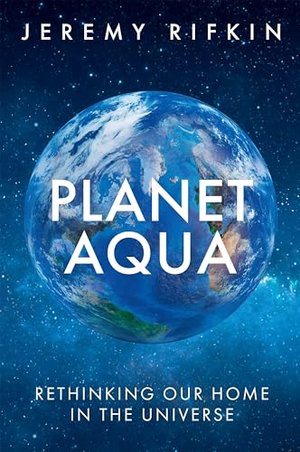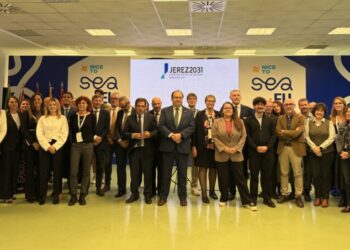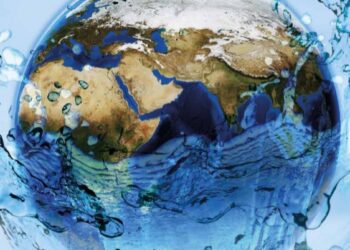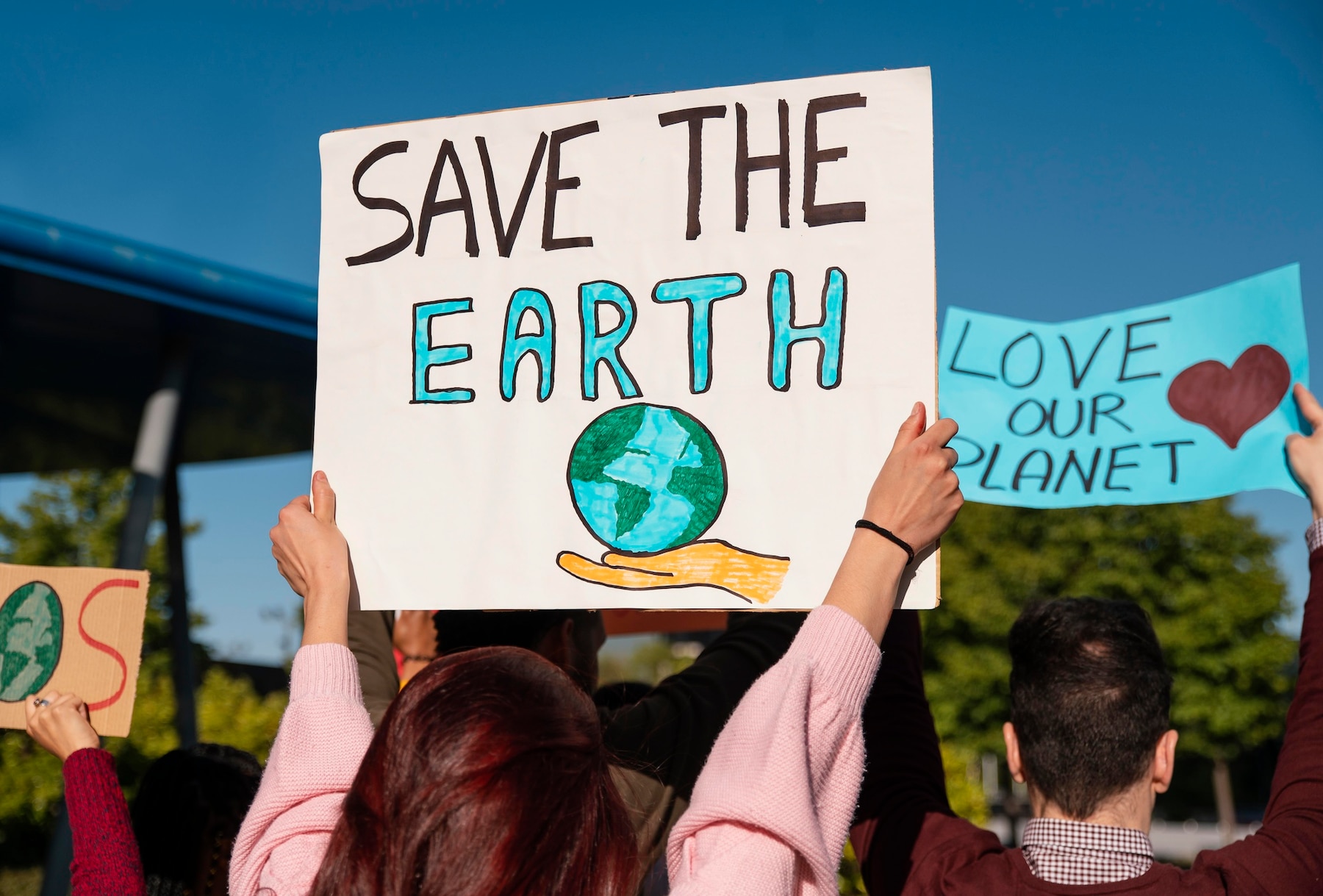Interview by Philippe Boulet-Gercourt – Nouvel Observateur 02/10/2024
In his landmark essay “Planet Aqua”, the American essayist traces the history of our civilisation through our relationship with water, this obviously vital resource but so monopolized by rich countries that our subsistence is threatened.
At 79, the famous futurist who whispers in the ears of the powerful in Washington, Brussels and Beijing, never tires of inventing words, launching trends and tackling the major problems of the time. In his latest work, a vast, brilliant and provocative fresco, where the appropriation of water intersects with the philosophies of Adam Smith and John Locke, the history of capitalist and socialist economies and male domination in the control of the most precious element of our lives, Jeremy Rifkin uncovers the meaning, for man, of our “Planet Aqua”.
We thought we were living on a planet of land? In reality, it is a planet of water, a hydrosphere, which is now rebelling. Rifkin does not just note a catastrophic situation, he deeply rethinks our relationship with water – that is, our history over the last six thousand years – and offers ways to reinvent it.
Discovering the absolutely central role that water plays in our history and our civilizations seems to have been a eureka moment for you. How did you come to write this book?
Jeremy Rifkin: I don’t know! This is the only book I’ve ever written that wrote itself. I started wondering how humanity could have gotten it so wrong for so long, and decided to put aside everything we thought we knew. And what I finally figured out is that about six thousand years ago, we changed course.
What happened?
In what is now Turkey, Iran and Iraq, the Tigris and the Euphrates, these two great rivers, gave rise to something very interesting. People were building the rudiments of urban life, they were planting cereals, barley, wheat, with increasing success. At some point, they realized that their population was increasing, but they didn’t have enough water to grow the cereals. So they started to exploit the water by building dams, dikes, canals and reservoirs.
At about the same time, the Indus Valley in India did the same. The Yellow River in China followed, the Nile, a little later Rome, and in the meantime Crete. Later still, Southeast Asia, then Mexico and the Incas in South America. This revolution was completed in the Age of Enlightenment and Progress and, closer to our own times, with the great hydroelectric dams such as the Three Gorges.
What unites these six thousand years of urban hydraulic civilization, from ancient Mesopotamia to modern dams, is this supreme pride: the idea that we thought we could appropriate the “water planet”, sequester this hydrosphere in all its dimensions, even the ownership of the oceans and fresh water, for a single species.
What was the key factor in the turning point six thousand years ago? The evolution of our species?
What created urban life? Everyone started practicing Neolithic agriculture at the same time, but some places succeeded and others didn’t. Why? In a brilliant study published in 2021, researchers from five universities showed that it had to do with cereals, versus tubers and roots.
That’s because tubers and roots don’t need a lot of water, while cereals use a lot of water. That’s the first thing.
Then they discovered that where there was grain, there was not enough water. In other words, as humans began to develop the rudiments of urban life, they needed more water. In smaller urban areas, they might have had one or two grains, like corn in America, but the rest were roots and tubers. In all other parts of the world, like China, India, and Europe, there was a lot of grain.
Then a decisive factor came into play, something I would never have thought of: researchers have shown that these regions became great hydraulic urban civilizations, to this day, because grain is preserved while roots and tubers rot. So grain could be used as a currency for taxes and payments. It was that simple.
How do we humans view water today?
We think we are on a terrestrial planet, but that is a mistake. The real awakening came when the astronauts of 1972 looked at our Earth and one of them took a picture. People said, “Damn, we thought this was a green planet!” We are on a water planet, and the hydrosphere is the germ of all life. At the same time, it is an extremely scarce resource: 70% of the Earth is water, but only 3% is fresh water, and 0.1% of this fresh water is available.
Water is the key to everything. Oxygen: Ocean phytoplankton produce 50% of the oxygen on Earth. Food, of course: Agricultural production accounts for 92% of global water consumption.
Energy: Scientists studied 12,000 thermoelectric power plants, nearly the entire global fleet, and found that they used an enormous amount of water, either to heat water to steam or to cool steam. Some of this water is recyclable, much of it is not.
If you go to solar and wind, you save 95% to 97% of all the water you need. It’s going to happen, because the market is there. But you have these old industries, these guys like Elon Musk, who don’t have a clue what they’re talking about.
You also highlight the key role that water plays in the lithosphere, the solid outer part of the Earth.
Without the hydrosphere, there is no lithosphere, because the hydrosphere is constantly weathering the rocks in the mountains. Minerals and elements become sediments, and then small forms of life. Other things mix with the sediments, and these elements and minerals move up the food chain. They go into plants, and then animals eat the plants, and then they go into animals, and finally, for example, phosphorus goes into my teeth.
So we have all these elements in our bodies that come from these water-altered rocks. And those atoms or molecules will go somewhere else after they leave us. The water doesn’t disappear – people get confused, they hear about floods and droughts – what changes is where it is and how much of it is.
You even show that the way the water is distributed modifies the very axis of the Earth, its inclination.
This is exactly what has been happening on our planet since the 1990s: global warming is rapidly melting the last Pleistocene glaciers and ice sheets in the Arctic region, the enormous volume of water released is spreading into the oceans and changing the distribution of the planet’s weight as well as its rotation on its axis.
But it also shows the adaptability of the human species. The planet tilts closer to the sun and further away. By studying the geological record, researchers have discovered that 800,000 years ago we had a steep tilt. This was followed by a 100,000-year ice age, followed by 10,000 years of warming. This is what I try to tell people: we may be living through such a shift, and the survival of our ancestors shows that we are not helpless… How did humans react in the past? We mobilized our brains, a neocortex, a language that allows us to transmit knowledge, opposable thumbs and fingers that allow us to use the tools and technologies that we have. Added to these weapons is empathy. It is engraved in our neurocircuitry.
You write that “our usurpation, manipulation, commodification and appropriation of waters over the last six thousand years has further compromised life over the last two hundred years, due to their close relationship with fossil fuel-based industrial civilization – the so-called ‘water-energy-food nexus’.” What do you mean by that?
The nexus of water, energy and food is the indispensable mechanism that fuels capitalism and socialism. Water is needed to produce energy, electricity. Fossil fuels are also needed for petrochemical fertilizers and pesticides. Water and energy are also essential for food production.
Everyone wanted to develop cash crops like wheat, barley, rye, rice, which are the most water-intensive. The “green revolution,” which was considered a great success in the 1960s and turned out to be a failure in the 1980s, allowed us to develop these very important crops that can grow faster and allow us to have more than one or two harvests a year. But this required massive amounts of fertilizers and pesticides and massive amounts of water, which destroyed and poisoned the soil base. It was a resounding failure.
What is the situation today?
There are on one side 4 or 5 major global food companies, coming from about 8 or 9 major food producing countries, and on the other side 160 countries that don’t have enough water to do anything except supply commodities. But we are depleting the water tables in the producing countries.
If you look at the total amount of water used for a grain or an animal, it’s sky-high. A bag of potato chips requires 48.9 gallons of virtual water [“virtual water” is a way of calculating the total amount of water used to produce food, fiber, and energy, editor’s note] . A cup of coffee requires 140 liters of virtual water to grow, package, and ship the beans. A pound of butter requires 3,602 liters of virtual water. Producing a single almond requires 3.2 liters of water.
How can these companies succeed? Farmers are silent. In the United States, in 2020, for example, they were subsidized by an average of 39%. And they are the ones complaining about the socialist left!
So we are in denial, or rather in the unspoken?
We’re in on a secret – subsidized. But in the meantime, as groundwater is disappearing en masse around the world, the ground is heating up and melting, literally, and all the infrastructure of the planet – communications, energy, mobility, logistics, water, the built environment – is sinking.
For every degree Celsius that the temperature on the planet rises, the atmosphere absorbs 7% more precipitation through evaporation from oceans, lakes, soil, leaves, trees.
All these problems are interrelated. Our great lack of courage is to have thought that we could commandeer the planet water, that’s my first point. Secondly, the floods, the droughts, the heat waves are not going to go away. Thirdly, everyone is scared to death, people are scared and they don’t know why. It’s like they woke up on a planet they don’t recognize. They either try to pretend it’s not happening, or they think it’s a lost cause, or they don’t know what to do: do I sell my house? Do I move? And the fossil fuel industry is hanging on. They’re not exploring new places, they’re just raising prices and trying to stay in the race. I don’t know what they tell their kids at night.
How to get out of the tension between the fact that water is a source of life while being an enemy? Because it is wild, uncontrollable…
Water is life. We are becoming globally aware that we live on a planet of water, we are arriving at a global biophilia. And, on the ground, a new governance is emerging everywhere, a bioregional governance. It is happening, there are for example two large bioregional governances in America that have existed for twenty-five years: the Cascadia region, composed of 8 American states and Canadian provinces, and the Great Lakes, composed of 8 American states and 2 Canadian provinces. These lakes represent 20% of all the remaining fresh water, on the entire earth.
In China, the Ministry of Ecology and 16 other ministries presented their plan which includes 8 “bioregions”. Europe has one: Occitania, the Pyrenees, Catalonia and the Balearic Islands. This is the first bioregion, and the only one in Europe so far.
What happens in these bioregions is that the people there don’t let themselves be fooled by anyone from outside, because it’s about their survival. When people know each other, when there’s no social media to tell them what’s real, when they go to the same stores, churches and synagogues, when they work with each other, when they roll up their sleeves… anything becomes possible.
Interview by Philippe Boulet-Gercourt – Nouvel Observateur 02/10/2024

Born in 1945 in Colorado, Jeremy Rifkin is the author of “The End of Work,” one of his most intuitive essays among the 23 he wrote. In September 2019, the man who was an advisor to three successive presidents of the European Commission published “The Global Green New Deal”.












